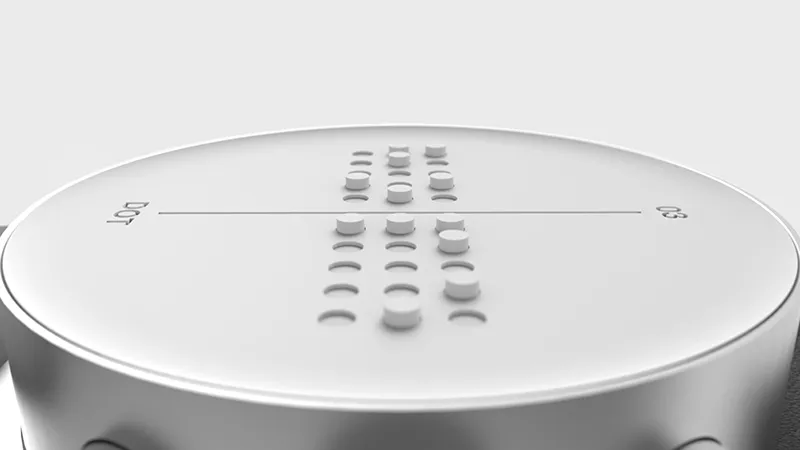A Smartwatch for the Visually Impaired
Developed by University of Washington students, Dot translates texts, tweets and e-books to Braille
/https://tf-cmsv2-smithsonianmag-media.s3.amazonaws.com/filer/44/a4/44a4667a-c1e1-42c4-b6ee-4aeec485aea5/braille-smartwatch.jpg)
When a group of students at the University of Washington saw a fellow classmate struggling with big heavy Braille books to study, it sparked an idea that could change the way the visually impaired interact with technology. The students created a startup to develop and produce an affordable active Braille smartwatch, called Dot. When wearing Dot, users can check the time, read incoming text messages or tweets, and even e-books—although reading War and Peace four characters at a time might not be the most efficient way to catch up on the classic.
Similar to other smartwatches on the market, Dot is designed to pair with a Bluetooth-enabled phone. When a text message arrives on the phone, the app translates it to Braille and sends it to Dot, which vibrates. Then the pins rise and fall to relay the characters. Other Dot features include a watch, alarm and notifications. Initial tests show Dot should last about five days between charges.

The face of the Dot smartwatch consists of four cells with six active dots, which rise and fall to produce the four Braille characters. The rate at which the watch displays new characters can be calibrated to meet the user’s reading speed. When Dot isn't translating text, it presents the time.
“Until now, if you got a message on iOS from your girlfriend, for example, you had to listen to Siri read it to you in that voice, which is impersonal,” Dot CEO Eric Ju Yoon Kim told Tech in Asia. “Wouldn’t you rather read it yourself and hear your girlfriend’s voice saying it in your head?”
Braille reading machines are typically made of ceramic and are cost prohibitive (thousands of dollars), keeping them out of the hands of the majority of people who need them most. To overcome this challenge, Dot developed an alternative solution using magnets. Thanks to this innovation and a new type of actuator, Dot is currently priced for pre-order at $300.
According to the World Health Organization, an estimated 285 million people around the world are visually impaired. The National Federation of the Blind reports that only 10 percent of blind students in the United States are learning to read Braille. In an effort to improve literacy, users wearing Dot will also be able to learn to read Braille. The smartwatch will include a phone app that will pronounce a letter, which will appear on the watch in Braille.
Dot is expected to be available next year in the United States and Canada.
This article was originally published by the editorial team at XPRIZE, which designs and operates incentivized competitions to bring about radical breakthroughs for the benefit of humanity.